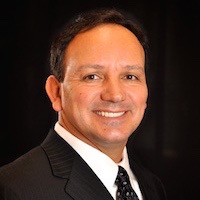Category Archives: Guidance
Three Common Mistakes Leaders Make When Trying to Influence Others — and What to Do Instead
When my daughter was eleven years old, she handed me a piece of paper one Friday afternoon. Across the top of the page written in hot pink were the words “Why You Should Let Me Have a Friend Over Tonight.”
Beneath the heading, in various bright colors adorned with hearts and smiley faces were five or six bullet points meticulously printed with the most perfect of penmanship. One of them said “I’ll share my super sour gummy worms with you,” and another promised “we will only make a little mess.”
While I was impressed with my daughter’s effort and artistic flair, I made a mental note that at some point I ought to help her with her negotiating skills. I winced as I recalled the last time I tried one of her super sour gummy worms, whose pungent flavor immediately led me to regret the decision as soon as I put it in my mouth — and then again hours later when most of it was still stuck to my teeth.
You wouldn’t expect a senior executive to have the same errors in judgment in an attempt at persuasion. And yet, often even the most professional of people make similar blunders. Today I’ll cover three of the most common mistakes people make in their attempts to influence others:
(1) Making invalid assumptions about what people value
(2) Overlooking the importance of objections
(3) Talking more than listening
Let’s talk about making invalid assumptions about what people value.
This was my lovely daughter’s critical error. While her offer to share super sour gummy worms may have been very compelling to her thirteen year old brother, it was actually rather repulsive to me. In her precious little mind, everyone loves those squishy sweet treats. It never occurred to her that wasn’t universally true.
And professional people often make this mistake as well. Not with gummy worms, but with questions of value.
One of my clients, Jan, learned the importance of checking her assumptions after pitching a proposal to senior executives with the argument that her program would allow employee satisfaction and morale to increase, leading to a happier workplace and less interdepartmental conflict.
While these were certainly attributes of a program she worked very hard to develop — and benefits that were quite meaningful to her — her audience was far more interested in financial gain than employee satisfaction.
Did she have to completely revamp her program to get their support? Absolutely not. She simply needed to amend her case to show the return on investment her program would generate after factoring in lower absenteeism and turnover rates, increased productivity, and reduced waste.
“Treat everyone the way you want to be treated,” we are taught from an early age. But unfortunately, not everyone values the same things. A better adage might be, “find out what is most important to the people around you and make an effort to respect their preferences.”
Unfortunately, understanding what people value isn’t always enough to cinch the deal — even when it appears that you have agreement. Let’s move on to the next most common mistake, overlooking the importance of objections.
Why is it important to surface objections?
Things are moving along well. You see heads nodding. It seems you are gaining the support of most the people sitting around the table. Wouldn’t surfacing objections at this point throw a monkey wrench in the works? Why allow people who are already with you to be swayed by people who have dissenting opinions?
The problem with those head nods is that you don’t really know exactly what people are agreeing with. They might be on the same page when it comes to the way you described the problem that needs to be solved. But not necessarily on board with your solution.
They may agree with part of your solution, but not all of it. They may be nodding their heads because their peers are doing that, and they feel compelled to follow suit.
The problem with partial agreement is that it usually only gets you part of the way there.
That may not be the case if all you are negotiating for is a onetime event — as in the case of my daughter. But more often than not, what executives really need is ongoing support and commitment. Sure, they want to get their program funded, their product launched, or their order filled.
But in order to have lasting success, they need champions within the organization, people who are committed to their projects, and customers that will continue to place more orders. And that takes more than a simple head nod or even a signed contract.
Partial agreement falls apart when things get difficult. People don’t follow through. Your calls stop being returned. Your funding gets pulled. And you are left scratching your head wondering what happened.
Those people who aren’t nodding their heads in agreement could be worth their weight in gold. But only if you get them to talk.
This leads us to the third mistake many executives make in their attempts to influence others: talking more than listening. Anytime people are being pitched with a proposal, a call to action, a request for support or funds or business, there will be concerns and skepticism.
Often these reservations don’t get voiced. Instead, people adopt a “wait and see attitude.” But the questions rattling around at the back of their minds may very well be valid — and if you knew what they were, you could take steps to address them and sidestep potential pitfalls you would otherwise unwittingly fall into.
So, the first step is to intentionally encourage people to voice their dissent. They could very well tell you something you really need to know. And if you acknowledge that they may see something important that you may not be aware of, you are sending a message that you value and respect them and care enough about them to address what they care about.
When your audience takes you up on your invitation to share their concerns and reservations, it is more important than ever to resist the temptation to talk and listen instead.
But many executives don’t do that. They figure a stronger argument is required. More data. Sexier examples. Better stories. Increased persuasion. So, they tell, and they sell while their audience feels less and less understood and slowly slips away.
When you feel the inclination to begin defending your case, hold your tongue and get curious instead. Ask for more details. Recap what they’ve said to be sure you heard them correctly. Paraphrase what you think is most important to them.
Continue asking clarifying questions until you begin to see things from their perspective. Because when you do, you will earn their trust.
You may have to rework your proposal. It may not be the reaction you were hoping for. But you have won for yourself the chance to truly gain the support you endeavored to secure — and when you take the steps to listen and respond to the concerns of your most important stakeholders, you increase the chances that the support you have just won will stand the test of time.
Let’s recap the most common mistakes executives make when attempting to influence — and what to do instead.
(1) Making invalid assumptions about what people value. Instead, recognize that not everyone likes the same thing you do. Find out what is most important to the people around you and make an effort to respect their preferences.
(2) Overlooking the importance of objections. Instead, realize that objections help you recognize what your audience cares most about and gives you an opportunity to deliver it. It earns you trust, respect and ultimately, their support.
(3) Talking more than listening. Resist the temptation to diffuse your audience’s objections and concerns with more information, telling and selling. Instead, probe to get a better understanding of what they really need and take steps to deliver it.
Influencing others is about more than crafting a polished presentation and a bulletproof case for action. You will get much further if you treat the art of influence more like a dance with your audience than a performance in front of them.
Invite them in and get them to participate. Listen to their needs, their desires, their concerns and their recommendations. Take action to address what they consider to be most important.
And whatever you do, please don’t offer anyone super sour gummy worms.
Leadership Lit Up: 5 Distinctions That Separate the Best from the Rest (Part 5)

Today’s article is the fifth in a series of five highlighting key attributes of Real Leadership: a practice that allows you to inspire exceptional (and sustainable) performance in yourself and others to achieve record profitability, customer loyalty and growing market share – even in saturated and highly commoditized markets.
KEY POINT #5: Real leadership brings life to our greatest dreams and visions.
Leadership is about taking people to a higher place. But before you can go there, you must envision it and create it. You must pay attention to the ideas, thoughts and inspirations that land gently on you and beckon to be given a vehicle to enter the world.
To do that, you need to take steps in your own life to nurture them. These ideas will come when you are relaxed, thoughtful, and open. It won’t happen when you are rushing around putting out fires.
You must create the time in your daily life to honor and develop your dreams, and to take care of yourself in such a way that those dreams continue to come to you. You must pay at least as much attention to the possibilities for change and improvement that exist all around you as you do trying to keep things running the way you think they should.
Many of the things you’ve devoted your time to trying to control and improve have likely served their purpose and need to be replaced by something else. Real leaders are those who ask the tough questions about whether what we are doing and have been doing is still in everyone’s best interests.
When times change greatly, Real Leaders know we all must change with them.
Pay attention to the small still voice within you that dares us to be greater. Quiet yourself enough to truly hear what it has to say. Then have the courage to act in spite of your fears. Be willing to move out of your comfort zone and act boldly. As you do these things, you’ll model the way for others to do the same.
Together, we can create true and lasting transformation throughout Corporate America. The Real Leader Revolution is enabling people at all levels of businesses and organizations to make a bigger, more meaningful impact being who they truly are, access and sustain unprecedented levels of performance and live more fulfilling lives – both on and off the job.
To learn more, sign up below to receive your copy of The Real Leader Revolution Manifesto as soon as it is available.
Leadership Lit Up: 5 Distinctions That Separate the Best from the Rest (Part 4)

Today’s article is the fourth in a series of five highlighting key attributes of Real Leadership: a practice that allows you to inspire exceptional (and sustainable) performance in yourself and others to achieve record profitability, customer loyalty and growing market share – even in saturated and highly commoditized markets.
KEY POINT #4: Real leadership unites. It does not divide.
Conflict is an inevitable part of life and relationships. It exists because we are different. We need to look at it in a way that allows us to come together and learn more about who we are and what we can do together.
In every conflict, each party truly believes they are right, and most of the time they have good reason (at least in their own minds) to think that way. But often our conclusions are based more in conjecture than fact.
We all tell ourselves stories of why people do the things they do. And if you believe a story that convinces you someone else has ill intent, chances are your reaction to that person will create problems that could have otherwise been prevented.
To rise above this pitfall, get in the habit of asking yourself questions such as “What am I believing about this situation (or person)? What do I really know? What am I not seeing?” When you ask questions like these, your brain expands its orientation to allow new information to come in.
Real leaders treat their stories more as hypothesis or possible explanations and are willing to entertain that there may be alternate explanations and view. Simply said, things are not always what they seem.
It is essential to be open to the views of others and go a step further to actively seek those alternative viewpoints out. Encourage people to challenge the way you are seeing things with the knowledge that you could be wrong.
When you are able to relax your filters in this way, true learning and innovation can take place. Solutions to problems that were right in front of you suddenly become visible. You’ll go beyond your limited views to see what is really possible – in yourself and others, your relationships, projects, positions, and organizations.
The trust and respect you’ll create in your working relationships will give rise to solid partnership and collaboration. The Real Leader Revolution is bringing to a head the need for this kind of collaboration, and the need to handle conflict in ways that bring transformation and new vision into our organizations, businesses and lives.
To find out more about how you can be a forerunner in this new way of doing business and achieve higher profitability, greater market share and sustained levels of exceptional performance, sign up below to receive your copy of The Real Leader Revolution Manifesto as soon as it is released.
Leadership Lit Up: 5 Distinctions That Separate the Best from the Rest (Part 3)
Today’s article is the third in a series of five highlighting key attributes of Real Leadership: a practice that allows you to inspire exceptional (and sustainable) performance in yourself and others to achieve record profitability, customer loyalty and growing market share – even in saturated and highly commoditized markets.
KEY POINT #3: Real Leadership is not a one man or woman show.
We are all familiar with the idea of a mighty hero, who is infallible, fearless, and all powerful. When you believe those should also be the characteristics of leaders, you’ll likely act in ways that can become more disempowering than anything. Leaders who believe they have all the answers seldom listen much to others, except to know how to better defend their own positions.
If leadership is truly about bringing out the best in people, leaders need to learn how to better listen to and connect with others, with a mind that is open and has room for ideas and thoughts that may oppose their own. Only then will we find the solutions that truly benefit a greater good.
No one person has all the answers themselves. As a leader, you are there to help others unearth and do something with their ideas so that they can become a part of a collective solution. To do this, you must place just as much importance on what others have to say as you do on their own thoughts and ideas.
When you can honestly admit you don’t have all the answers, you build trust and strengthen relationships while cultivating the ability of your people to find those answers together. In acknowledging your need for partnership with others and encouraging them to share their own vital pieces of the puzzle, you will create a strong, self-sustaining culture that works together to produce excellence.
You do not need to be the hero. In fact, some of the most effective leaders are those who are more concerned about elevating the status of others than raising their own. Lao Tzu, one of the greatest mystics of all time said “When the best leader’s work is done the people say, “We did it ourselves.”
The Real Leader Revolution is allowing executives to free up significant levels of energy by letting go of thinking they must have all the answers – and in so doing inspire and empower their people to get better results, make a bigger impact and contributions.
To find out more about how you can exercise Real Leadership to create the kind of vibrant, inspired workplace that unleashes unprecedented levels of performance and attracts key talent and loyal customers, sign up below to receive your copy of The Real Leader Revolution Manifesto as soon as it is released.
Leadership Lit Up: 5 Distinctions That Separate the Best from the Rest (Part 2)
Today’s article is the second in a series of five highlighting key attributes of Real Leadership: a practice that allows you to inspire exceptional (and sustainable) performance in yourself and others to achieve record profitability, customer loyalty and growing market share – even in saturated and highly commoditized markets.
KEY POINT #2: Real Leadership is more than position, title, status or power – it starts within.
Leadership is not the private reserve of people who hold fancy titles, have others reporting to them, or are even in organizations at all. Real Leadership is about bringing out the best in everyone and helping them focus their unique talent, passion, energy and style into something that benefits a greater good.
But you have to start with yourself. You can’t wait for someone to come in and make everything right or rely on people in high positions to do that for you (whether than be in organizations, communities or governments).
The more we look “out there” for our solutions, the further we get away from the solutions each one of us holds within. We are all pieces of an intricate puzzle, and every single one of them is essential.
It is essential to take responsibility for what you have control over in your life and make whatever impact is yours to make, even if that is only in your thoughts – in what you are paying attention to, in what you say and do, and in the example you set for others.
To do this, you must become vigilantly aware of assumptions you may me making that lead you to believe there is nothing you can do – and ask yourself if they are really true. Sometimes, though you may not have the authority to bring about wide scale change, you can exercise the influence to begin a conversation that – approached constructively and respectfully – can get things moving in a better direction.
We are collectively creating a reality that mirrors our thoughts. We must do what we can to keep that positive and constructive, so that our actions are that way as well. Real leaders help others move from feeling like they are at the mercy of their circumstances to recognizing what is, in fact within their ability to influence and impact.
And they start by modeling that behavior themselves.
The Real Leader Revolution is already underway, providing ample opportunities for leaders at all levels to have a more significant impact on their organizations while accessing higher levels of performance, bringing more of who they really are to their work, and living more meaningful lives both on and off the job.
If you would like to read more about how you can exercise and nurture Real Leadership in yourself and others, sign up below to receive your copy of The Real Leader Revolution Manifesto as soon as it is released.
Leadership Lit Up: 5 Distinctions That Separate the Best from the Rest (Part 1)
 “Sometimes our light goes out but is blown into flame by another human being.
“Sometimes our light goes out but is blown into flame by another human being.
Each of us owes deepest thanks to those who have rekindled this light.”
– Albert Schweitzer
Leaders are people who shine a light on their surroundings and everyone around them. The light they shine comes from within them, a product of the unique combination of their talent, energy and passion.
The very best, what I call “Real Leaders”, are those who help others ignite their own sparks so that they too may serve as a beacon of hope, inspiration and courage. Illuminated by this light, our paths become brighter and we can clearly see any obstacles that lie before us so that we may swiftly and effectively overcome them and grow stronger in the process.
This light also allows us to recognize and bring out the strengths in ourselves and others that enables us to persevere and emerge victorious in the face of our greatest challenges and setbacks.
Exercising Real Leadership does not require that you have a degree from Harvard, or anywhere for that matter. As you endeavor to practice leadership in every aspect of your life, no matter what your vocation or role, shining your light brightly requires that you remember a few key points.
This is the first in a five-part series highlighting key attributes of Real Leadership: a practice that allows you to inspire exceptional (and sustainable) performance in yourself and others to achieve record profitability, customer loyalty and growing market share – even in saturated and highly commoditized markets.
KEY POINT #1: Real Leadership focuses on possibility and potential.
In times of widespread change, there is great fear. It is easy to become immersed and overwhelmed with feelings of hopelessness, frustration, anger, and sadness. These feelings can lead you and others to become engaged in defensive routines that seek to place blame, or to resign yourselves to victim status, waiting for rescue.
It is essential to reframe what you are seeing and make sure the lens is clear. Shakespeare once said, “It is neither good nor bad, but thinking makes it so.”
You can look at what is happening around you and instead of focusing on frustration and potential loss, pay attention to what you (and others) have within that allows you to rise to the challenge. We are stronger than we think we are. We are resourceful. Together we can create far more than we can individually.
Often our greatest attributes, talents and strengths lie dormant inside of us until something happens that requires we summon them up. Real Leaders effectively galvanize these forces and channel them in constructive ways.
As you shift your attention from obstacles to opportunities and put your energy on what is possible, you’ll see solutions that previously evaded you and recognize that you are capable of far more than you initially realized. And when you act from this frame of reference, you’ll inspire others to do the same.
When you focus on the positive attributes in others, you help them recognize they have greatness within as well and catalyze their potential. In this way, you can exercise leadership regardless of what your job or role is. This is what is needed most in times of change, challenge and uncertainty.
The rapid pace of change in business today brings with it a high level of challenge and uncertainty. The Real Leader Revolution is a movement that empowers people at all levels of businesses and organizations to rise to the occasion and navigate unchartered territory with courage and grace.
To find out more about how you can maximize your leadership to make a bigger impact, sign up below to receive a copy of The Real Leader Revolution Manifesto as soon as it is released.
Have You Leveraged the Gifts from 2017 That Will Make 2018 Extraordinary?
Well, the dust is finally settling, and the holiday decorations are (almost) packed up and put away for next year. For many, the holidays are a frenzied time – a rush to the finish line that has adrenaline spiking for days on end. Between running around trying to find the perfect gifts to sending out cards, preparing meals, entertaining family and friends and spending a lot of time around people we don’t often get to see, it can be exhausting.
Some of us were lucky enough to have a bit of down time before jumping back in to the excitement that the New Year brings. And others of us have simply been riding that wave that takes us from one activity to the next, with little time for transition. Though it is already mid-January, it is never too late to take advantage of the demarcation that the end of one year and the beginning of another brings.
The turning of each year lends itself well to waxing reflective, calling to mind both the experiences in the past that have led us to the present moment, as well as what the future might hold – what magnificent things are bubbling up within us, just waiting to take form.
It’s curious that we often associate moments of reflection with major milestones (like a New Year), rather than as a continual process in our lives. Yet it’s easy to let the frenetic pace of business, the holidays, and personal affairs prevent us from enjoying the clarity of being alone with our thoughts, and even going beyond them into the silence of our own experience.
We get swept up in a kind of auto pilot mode, where we just do what is in front of us and go from one thing to the next, without a lot of thought.
But it is in the evaluation and reflection of our experiences that we receive insight – a vital gift that can become meaningful and empowering force in our lives.
Pressing on from one thing to the next without pausing long enough to integrate what we have learned deprives us of the gifts these experiences bring. It’s like finding a few wrapped presents with your name on them that were left behind in the festivities – and absentmindedly throwing them into a box instead of opening them up to see what’s inside.
Our experiences are uniquely designed to allow us to learn – about ourselves, others, and life itself. We learn about what works, what feels good, what doesn’t, who we are, what we are capable of, what we want more of (and less of too).
But only if we pause long enough to entertain the questions that allow us to unpack these gifts that are waiting to be opened.
If you have not yet afforded yourself the indulgence of conscious and intentional reflection, I encourage you to carve out some time to do so. Because the best goals, the best visions to move toward in the coming year will be those that align with the whispers of your heart – those that tap the infinite potential and wisdom that is already inside you. And you’ll never really know what those are until you take the time to go within and ask.
Below are some questions that can help you in this process. Some of these questions might seem more powerful to you than others – let yourself go where you are drawn with them. You may even want to take a quick look at them and then put them away and see what comes to you when your mind is empty of thoughts.
Or, you may scrap these questions and come up with different ones of your own. The important thing is to allow yourself the time to go within and listen with curiosity and earnestness.
QUESTIONS FOR YEAR-END REFLECTION
- As you reflect on this past year, what were your three or four most significant accomplishments, breakthroughs, and/or achievements?
- Looking back over the year, what (if anything) blocked or held you back as you moved toward your goals/objectives? How will you overcome those obstacles in the future?
- What were your biggest insights or realizations over the past year that you gained through your experiences?
- How will you apply what you learned this past year to what you want to create in the upcoming year?
- What are the top two or three things about your job/practice that you most want to be different this year?
- What two or three changes do you most want to see in your personal life?
- What significant challenges will face you this year? Personally? Professionally?
- What strengths will you rely on most to face the challenges that lie ahead?
- What qualities, skills, etc. could you develop within yourself to better arm you for the upcoming year?
- Picture yourself a year from now, looking back over the past year. What three or four accomplishments would you like to have achieved?
- What actions are you prepared to take to achieve your desired results for the upcoming year?
I look forward to another year ahead of navigating a path of discovery – one that will lead us all closer to our most precious goals, and allow us to make the most out of every experience we have – leaving everything we touch a little better off for the interaction – our teams, our customers, our colleagues, friends, family, and of course, ourselves.
Wishing you a wonderful and prosperous New Year ahead!
Why Letting Go of the Old Helps You Succeed With the New (and How to Do It)
What is it that you are longing to create in the coming year?
And what do you need to let go of in order to allow it to fully take root?
Every year, we are encouraged to set New Year’s resolutions.
We are a goal driven society that is conditioned to seek more. Our egos desire more money, more fame and prestige, and more stuff. A deeper part of ourselves longs for more peace, more meaning, and more purpose in our lives.
We want to move beyond our previous realizations of what we’ve already accomplished to master newer, better ways of doing things –whether that be what we create in our lives or in our organizations – and as leaders what we can inspire others to do as well.
Though it is tempting to occupy ourselves with thoughts of how we can go about achieving all of this and what we need to do more of, perhaps what we really need to start with is what we need to do less of – what we need to let go of to create the space for something new to come in.
We are constantly evolving both individually and collectively.
It is so easy to look to the past to define who we are though the things we’ve already done – goals we’ve achieved, titles we’ve acquired, creations we have built. Our previous experiences coagulate to form an identity that is easy to confuse with our true nature.
The fact of the matter is,
you are not your accomplishments,
your creations, or the sum of the various roles
you play in your life – manager, director, vice president,
mother, father, friend, son, daughter, etc.
You are much, much more than that.
Your potential is limitless.
And yet, we limit ourselves by these definitions.
They filter the experiences we allow ourselves to have and compel us to define the form that our deepest longings should take. In order to be happy, we reason – we must get that promotion, achieve this or that particular goal, hit that target. So we continue to go through the motions, doing the kinds of things we’ve always done – on a sort of auto pilot.
Some of this may bring satisfaction, and some may bring a growing source of discontentment. We need to attune ourselves to that which brings us the most of what we truly desire and open ourselves to the possibility that what we really want may need to come in a form that has previously been undefined for us.
In short, we must allow ourselves to surrender what we think we know to open up to the mystery that is unfolding in each of our lives.
Easier said than done, right?
How exactly do you go about letting go of the known when it’s all you know?
We can take our cues from nature. Snakes and other reptiles shed their skin, trees drop their leaves, and caterpillars create cocoons in which their forms entirely dissolve before recreating themselves in the form of butterflies.
Even a fish in a bowl cannot stay in water that contains its excrement – the waste must either be emptied and replaced with new water, or absorbed by something else that will remove it from the fish’s environment.
Without engaging in these renewing processes, these creatures will die. And so it is of us. Many of us are already walking around encased in layers of old, dead stuff that needs to be released.
What are you holding onto in your life that has run its course?
What are the old outmoded ways of doing things that no longer bring you energy? What are the things you’ve acquired that you no longer need? What beliefs are you holding onto that are no longer true for you?
Pay attention to the times that you feel constricted, anxious, or tired and in those moments ask what you can let go of. Don’t be afraid of the answer. Though it may frighten you because it introduces an element of the unknown, following these insights will always lead to freedom and liberation.
Your computer can only handle so much data.
If you do not delete old email and get rid of files that have been accumulating over the years, and if you continue to add new programs without deleting old ones, you will find that it becomes sluggish and unresponsive.
Just as freeing up space allows your computer to process things more quickly, so too will clearing your own personal space (whether of things or thoughts) allow you to access new levels of clarity and creativity.
Space invites opportunity.
You will breathe easier, be more present in every action and interaction you partake of, and bring more of who you really are to what you do. And you will open up the space of possibility that will allow something to come in that may surprise and delight you.
So here’s a thought for the New Year: Instead of trying so hard to do more with less, perhaps we can allow ourselves to explore the possibility that in doing less, we can have so much more.
For more on how to affect your own personal and professional transformation, check out The Pinocchio Principle: Becoming a Real Leader, available in both paperback and Kindle formats.
Implications for Real Leaders
The Real Leader Revolution is bringing to a head the need for businesses to better tap the power and potential that exists within the people who are the lifeblood of their organizations. This energy, when properly catalyzed and harnessed, will create the kind of value that earns loyal customers, increased market share and strong, sustainable profitability.
To find out more about how you can unleash this talent, energy and potential in your own organization (starting with yourself), sign up below to receive your copy of The Real Leader Revolution Manifesto as soon as it is released.
Ringing in the New Year: Why Looking Back is as Vital as Looking Ahead
There is something magical about being at the threshold of a new year.
It is like climbing to the top long staircase to find ourselves on a landing, standing before a large glimmering door just waiting to be opened. As we look down, we realize how far we have climbed to get here. Yet, we cannot help but wonder what lies behind the door.
Often, we underestimate the amount of growth we have achieved.
It’s important to take some time to reflect on the unique combination of experiences that have led to both successes and disappointments and what we have learned from them. When we do, we often gain the insight that helps us become aware of what we most need to do from this point forward.
I often work with people who feel they are ready for a change, but aren’t sure what that change should be. They aren’t necessarily miserable in their jobs or other areas of their lives – they just long for something that will fill them up in ways they haven’t been fulfilled in the past.
When I coach people who feel this way, at times they want me to tell them what the next best step is – give them the answer, or perhaps a step-by-step process that will lead them to find what they seek. Of course, no person has these answers for another. Our greatest challenge and opportunity is to find them for ourselves.
Each of our lives has a story with perfect order and meaning.
As within a novel or screenplay, each character has a specific relationship to the main character and every scene has some relevance to his growth and evolution. There will be victories and disappointments, as well as twists and turns that transition us from one to another and back again.
We will have occasion to laugh, cry, and experience a myriad of other emotions that are somewhere in between. And as a result of this perfect combination of events and mini-plots, we discover ourselves to be better people.
When we are reading a book or watching a movie, the perfect order is often easier for us to see than it is for the characters enmeshed in the stories we are watching. Yet, the mystery and intrigue, the humor over each misstep, and the courage we see the characters exude to find their way give substance to the story and allow us to leave the book or the theatre feeling moved or inspired in some way.
As you reflect on 2017, can you identify your story’s most pivotal turns? What did you learn from them? Think about your character sketch. What are the endearing qualities you have that make you unique and special? How can you leverage them to build on the previous events to create a story worth telling?
Think also about the people that surround you. In what ways are they helping you grow? What are they teaching you about yourself – whether in joyful or painful ways? And what are the qualities they possess that are similar to and different than yours? How do you complement each other, and what might it be that you can create together?
You now sit at the threshold of another chapter in your story.
Contemplate what you have already experienced and ask yourself how you might build upon it to add a bit of intrigue and adventure. Identify the ways that you could add a little lightness and humor. Think about the interplay between the characters and how you could spice things up a little.
We have each been given the makings of a beautiful tale. Open your eyes and survey them the way you would the perfectly planned detail of your favorite movie or novel. Give yourself completely to the adventure, the possibilities, and the humor in your life.
Then find a way to revel in the joy of living it.
For more on reveling in the adventure that is your life, check out The Pinocchio Principle: Becoming a Real Leader, available in both paperback and Kindle formats.
Three Perilous Pitfalls You Can Avoid by Leveraging the Power of a Mastermind
Imagine holding handfuls of puzzle pieces that you are trying to assemble, without having access to the box that illustrates the finished picture. Around you are others who find themselves in the same predicament. You all hold pieces of each other’s puzzles. And you also have the ability to help each other tune into what the finished image looks like.
Though this may seem more like nothing more than an amusing simulation, it is quite fitting as a metaphor for the power of connecting with other minds.
It took me awhile to recognize and utilize this power myself. Many of us have been conditioned to believe we must figure everything out on our own, work independently, practice self-sufficiency. But over the years, I’ve become more and more convinced that working with others in groups allows us access to answers we would be hard pressed to find anywhere else.
The other day I mentioned to a Fortune 100 client that I had just returned from a three-day mastermind event. His response, “What is a mastermind?”, reminded me of the fact that until I became an entrepreneur, I wasn’t familiar with the term (or the benefits of) masterminding either.
Napolean Hill is among those who made popular the concept of the mastermind. He defined it as “two or more people who work in perfect harmony for the attainment of a definite purpose.” Hill went on to say “It is the principle through which you may borrow and use the education, the experience, the influence and perhaps the capital of other people in carrying out your own plans in life. It is the principle through which you can accomplish within one year more than you could accomplish without it in a lifetime if you depended entirely upon your own efforts for success.”
Masterminds can take many forms.
- They can be large and formal (like the one I attended a little over a week ago), or small and intimate (like engaging in a conversation with a coach, mentor, or trusted colleague).
- They can be organized around a specific concept or theme, with the intent to delve more deeply into specific concepts and glean insights into their application, like the mastermind meetings I facilitate in my Real Leader’s Guide to Freedom & Flow Group Intensive Program.
- They also can be created to solve a specific problem, or to provide people the opportunity to work together to collectively solve a variety of problems.
The benefits of a mastermind are worth exploring, and its power is often overlooked and unfortunately untapped. Below are three pitfalls many executives unwittingly fall into that engaging in some form of masterminding can help you to avoid.
(1) Getting so entrenched in problems that you cannot see the solutions.
The pace of business has many executives running from one thing to another in a hopelessly reactive state that often keeps them from pausing long enough to recognize what is really going on and what must be done to address it. In a rush, solutions are often devised to address symptoms without getting to the true root of the problem. People fall into a state of autopilot that has them acting operationally instead of strategically. As a result, solutions are short lived and run the risk of causing more problems than they solve.
This is the equivalent of trying madly to put puzzle pieces together that simply don’t fit.
The benefit of utilizing a mastermind to identify solutions is that it allows you to connect with people who can help you snap out of a frenzied, somewhat unconscious state to ask the right questions, consider the best approaches to truly understanding the underlying dynamics of a problem, and benefit from perspectives different than your own. This allows you to see what you previously missed, and provides the space necessary to drop into a richer understanding of what must be done.
In pausing long enough and looking deeply enough to ensure you have the right pieces, your puzzle comes together in a way that is functional and sustainable.
(2) Failing to recognize and work through the resistance that keeps you from taking necessary action.
Sometimes the best solutions evade us because we hold assumptions that keep us from believing they are possible, or that we have the ability to execute them. Our beliefs about what it will take to succeed can keep us from even entertaining the possibilities before us. In short, the solutions may be right in front of us, but we don’t see them because we are in a state of overwhelm, frustration or doubt that obstructs our view.
This is the equivalent to not being able to envision what the completed picture looks like and not recognizing that you hold in your hands the pieces necessary to assemble it.
When you mastermind with others, they approach the problem/opportunity without any of the emotion, drama, and limiting assumptions that come from being entrenched in it. As a result, they are able to see clearly and point things out for you that you cannot see on your own. They can ask you questions and offer observations that help you cut through the clutter that obscures your view and help you see the irrational nature of assumptions you may not be willing to challenge on your own.
With a clearer view, you are able to discern a better visualization of the picture your puzzle is designed to create and recognize that you have the very pieces you need. You also gain the support and courage necessary to lay them down and piece them together.
(3) Wasting time and experiencing unnecessary frustration working in isolation to figure things out.
Regardless of what problem or opportunity you are facing, there is someone, somewhere who has been through something similar, who knows something you may not. And yet many of us insist on doing things ourselves, reinventing the wheel, and failing to leverage the knowledge, experience and insight all around us. This can result in countless hours, weeks, months and even years of time spent doing something that could have been solved or created in a fraction of time, without the whopping pain that comes from repeatedly banging your head against a wall.
It is the equivalent of failing to recognize that others hold pieces of our puzzles that they would gladly offer up, if only we had the willingness to ask.
When you mastermind with others, you not only gain access to potential solutions, approaches and tools you didn’t previously have, you also benefit from learning lessons others gained through mistakes – without having to make those mistakes yourself. Additionally, you will benefit from honest, supportive feedback provided by people who will tell you what you need to hear (information others may not feel comfortable sharing) in a supportive way that allows you to course correct before any damage is done.
You gain access to other’s puzzle pieces instead of trying to fabricate your own – as well as information that helps you put those pieces together efficiently and effectively.
In summary, masterminding can allow you to see beyond constraints that keep you from rising to your most pressing challenges and promising opportunities, produce solutions to problems that previously eluded you, and save you countless hours, weeks and even years of wasted time and unnecessary frustration.
In addition to avoiding each of these pitfalls, Napoleon Hill spoke of another benefit of masterminding that is worth mentioning. He is often quoted saying “When two (or more) people get together, a third mind, the Master Mind, is created, becoming a separate force in the conversation.”
I believe this separate force is a higher mind – a source of universal intelligence, the stuff utilized by the greatest inventors, scientists, leaders, writers, artists, and geniuses of our time. Putting our heads together in this way allows us to go beyond the limited database of our brains to access this higher mind in a way that can potentially resolve even the most pressing of problems, for us as individuals, organizations, communities and societies.
Now that’s a puzzle worth assembling.
If you are interested in experiencing the power of a mastermind first hand, check out The Real Leader’s Guide to Freedom & Flow Group Intensive. Though the fall program has filled, you can sign up for the waiting list to be the first to get information on the next session, as well as first dibs on the limited seats that will become available.







